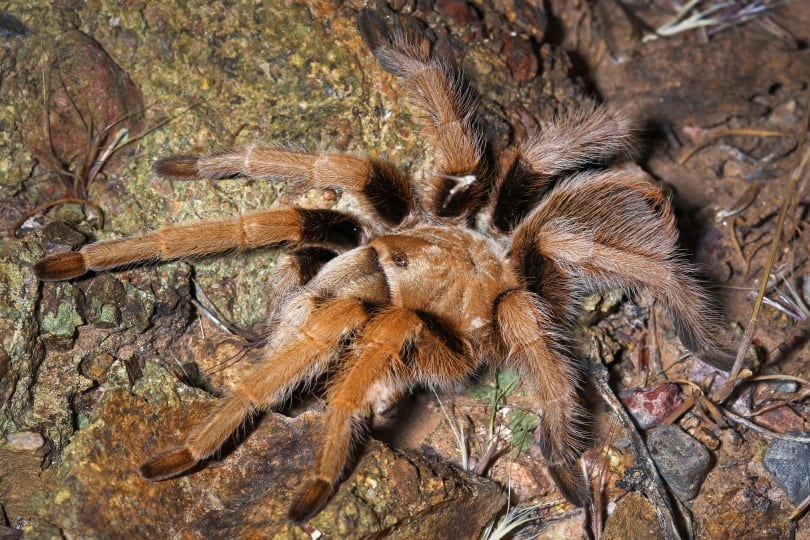Spiders are found throughout the state of Arizona. The warm desert climate is home to three species of poisonous spiders and many other interesting varieties. It is difficult to pinpoint specific parts of the state in which you can find certain species because spiders often hitch a ride on luggage, cars, and other species to travel around the state.
Keep reading to learn more about 10 common spiders that you’ll come across in Arizona.

The 10 Spiders Found in Arizona
1. Black Widow

| Species: | Latrodectus hesperus |
| Longevity: | 1 to 3 years |
| Venomous?: | Yes |
| Kept as Pets?: | No |
| Adult size: | 3 to 13 mm |
| Diet: | Mosquitoes, ants, flies, other insects |
The Black Widow is known for the red hourglass shape on their back. This is one of three species in Arizona that has venom that is harmful to humans. Their venom affects the nervous system and can be fatal if not treated, although deaths are rare. You’ll find these spiders close to man-made buildings and in woodpiles.
2. Arizona Brown Spider
| Species: | Loxosceles arizonica |
| Longevity: | 1 to 2 years |
| Venomous?: | Yes |
| Kept as Pets?: | No |
| Adult size: | 1 to 1.5 inches |
| Diet: | Soft insects |
The Arizona Brown Spider closely resembles their cousin, the Brown Recluse. They are venomous, and although their bite is not generally fatal to humans, they do have a necrotic venom that can cause lasting tissue damage. They don’t build webs; instead, they track down and hunt prey at night. They hide during the day under rocks and in other dark places, including shoes and clothing!
3. Brown Recluse

| Species: | Loxosceles reclusa |
| Longevity: | 1 to 2 years |
| Venomous?: | Yes |
| Kept as Pets?: | No |
| Adult size: | ¼ to ¾ inch |
| Diet: | Insects |
The Brown Recluse is the last of the Arizona spiders venomous to humans. They like to hide in dark places, such as sheds, garages, woodpiles, and closets. They’re identifiable by the violin-shaped pattern on their back. The bite of a Brown Recluse can vary in severity, but symptoms can escalate quickly if not treated.
4. Carolina Wolf Spider
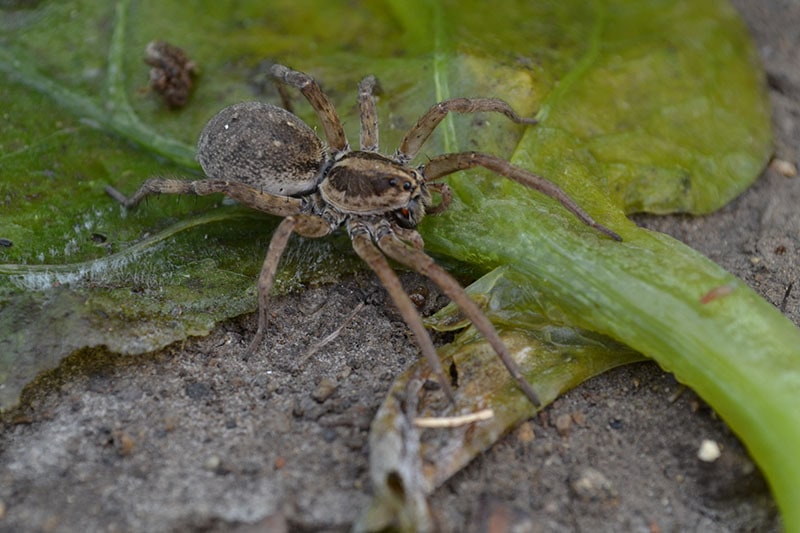
| Species: | Hogna carolinensis |
| Longevity: | 1 to 2 years |
| Venomous?: | Not to humans |
| Kept as Pets?: | No |
| Adult size: | 18 to 35 mm |
| Diet: | Insects, small invertebrates |
The Carolina Wolf Spider is the largest species of wolf spider in North American. These shy spiders like to hide in burrows and don’t spin webs. They won’t bite humans unless provoked. Their bite can cause itching and swelling in humans, but it isn’t usually dangerous.
5. Beach Wolf Spider
| Species: | Arctosa littoralis |
| Longevity: | 1 to 4 years |
| Venomous?: | Not to humans |
| Kept as Pets?: | No |
| Adult size: | 1.1 to 1.5 cm |
| Diet: | Insects |
This species of Wolf Spider is also known as the Sand Wolf Spider due to their tendency to live in the sand, either in the desert or along the coast. They don’t spin a web but instead, hunt their prey. They hunt at night and camouflage themselves in the sand and below driftwood during the day. The brown spots on their bodies make it easy for them to hide.
6. Banded Garden Spider

| Species: | Argiope trifasciata |
| Longevity: | 1 year |
| Venomous?: | Not to humans |
| Kept as Pets?: | No |
| Adult size: | 1 inch |
| Diet: | Small insects |
Not only is the Banded Garden Spider found in Arizona, but you can also find them in every other U.S. state. They are black, yellow, brown, and white, with primarily yellow and white stripes on their backs. They spin large webs that can be more than 2 feet in width. Their venom, while not problematic for humans, paralyzes their insect prey.
7. Giant Daddy Long Legs
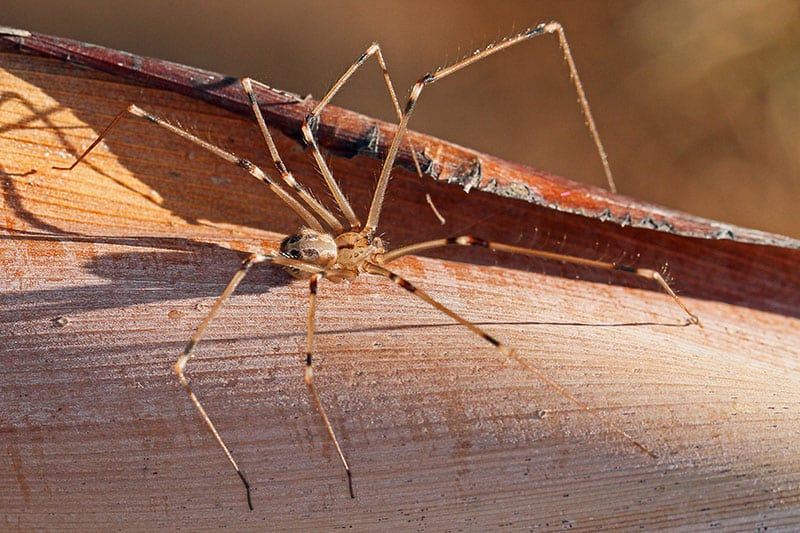
| Species: | Artema atlanta |
| Longevity: | 1 year |
| Venomous?: | No |
| Kept as Pets?: | No |
| Adult size: | 6 to 7 inches |
| Diet: | Opportunists |
The Giant Daddy Long Legs can reach up to 7 inches, but they are not to be feared. They are known for their long spindly legs. You’ll find them hiding under logs and rocks. They’ll also sometimes hide in quiet areas of your home, like the garage or basement. They are opportunistic eaters that will eat anything that they can. They’ll eat other spiders, insects, decomposing plant and animal matter, and even leftover human food scraps.
8. Marbled Cellar Spider
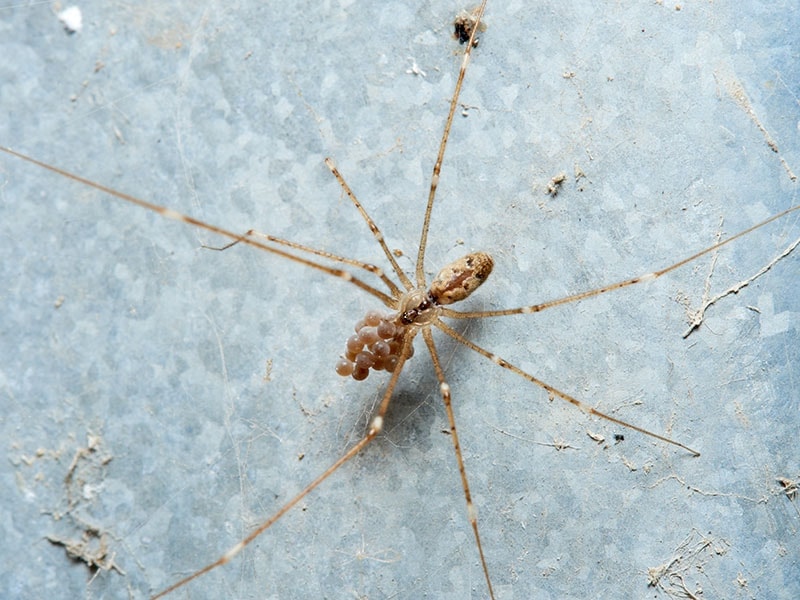
| Species: | Holocnemus pluchei |
| Longevity: | 1 to 2 years |
| Venomous?: | Not to humans |
| Kept as Pets?: | No |
| Adult size: | 5 to 8 mm |
| Diet: | Moths, flies, mosquitoes |
The Marbled Cellar Spider is a common household spider. They typically spin webs and nest in basements, attics, and other dark, quiet areas of homes. These spiders often live in small groups that share a single web. They have long legs like their Daddy Long Leg cousins, although their overall size is much smaller. Their name comes from the marbled appearance of their legs, which are tan or white with black bands around the joints.
9. Giant Crab Spider
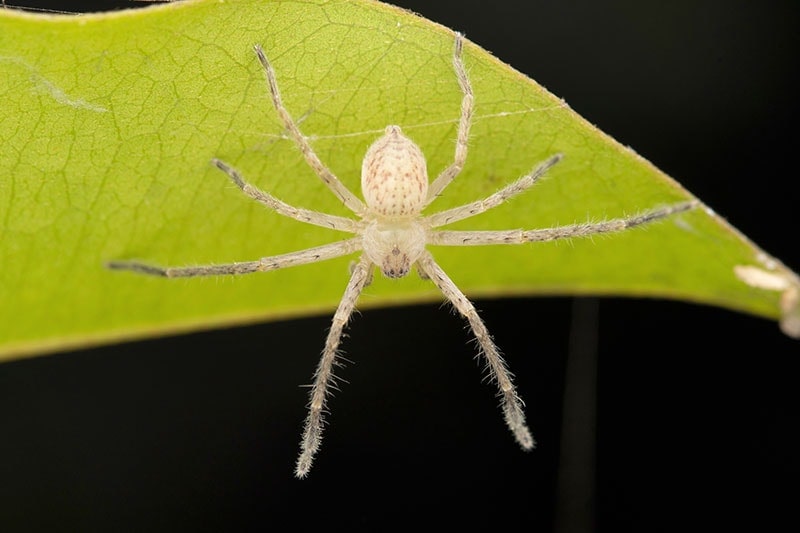
| Species: | Olios giganteus |
| Longevity: | 2 to 3 years |
| Venomous?: | No |
| Kept as Pets?: | No |
| Adult size: | 2 to 2.25 inches |
| Diet: | Insects |
The Giant Crab Spider is also known as the Huntsman Spider. These nocturnal hunters hide during the day. They have flattened abdomens that enable them to squeeze in between rocks into narrow cracks. Even though they are large and scary looking, these spiders are fairly docile and only bite when attacked.
10. Western Desert Tarantula
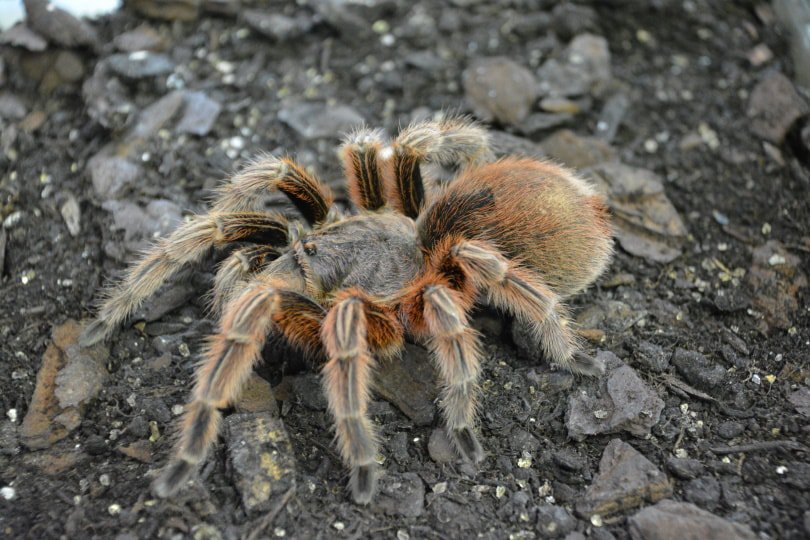
| Species: | Aphonopelma chalcodes |
| Longevity: | 10 to 12 years |
| Venomous?: | Not to most humans |
| Kept as Pets?: | Sometimes |
| Adult size: | 3 to 4 inches |
| Diet: | Grasshoppers, beetles, smaller spiders |
The Western Desert Tarantula is the only spider on this list that is sometimes kept as a pet. Despite their frightening appearance, they are quite docile by nature. They are far more likely to hide than they are to bite. This tarantula species looks like many others in their family. They have black or reddish hairs covering their bodies and stocky legs. They do have venom, but it is unlikely to be any more harmful to humans than a bee sting.

Conclusion
Many creatures in the desert can sting or bite you. The good news is that most of the spiders in Arizona aren’t venomous. Other than the Black Widow, Brown Recluse, and the Arizona Brown Spider, all you’ll have to worry about if you get bit by another species of spider is a bit of pain from the bite and a little swelling. However, it’s a good idea to be on the lookout for those three venomous spiders when you’re out exploring in Arizona, as their bites can be harmful.
- Related Read: 24 Spiders Found in Iowa
Featured Image Credit: Ryan M. Bolton, Shutterstock
